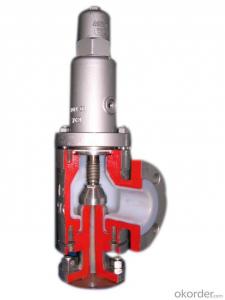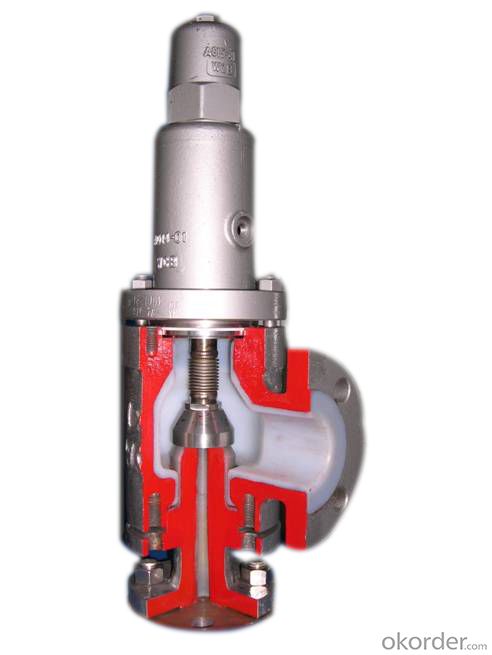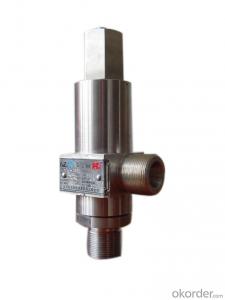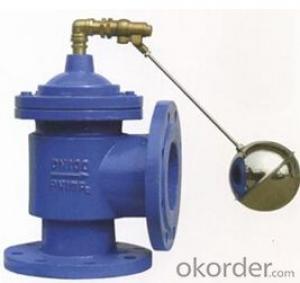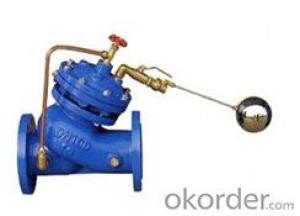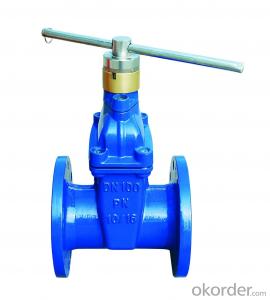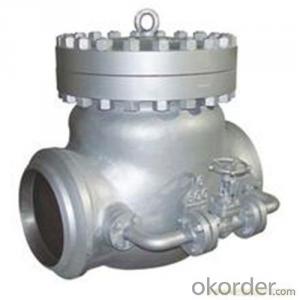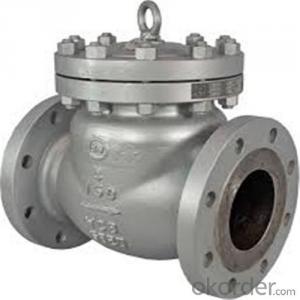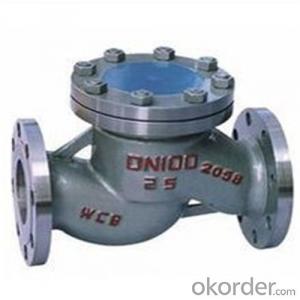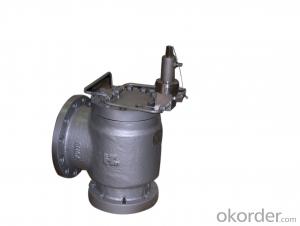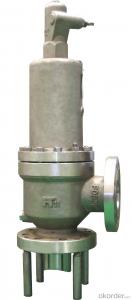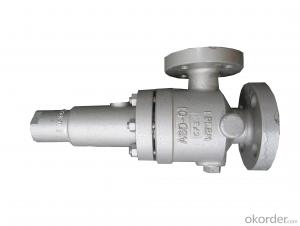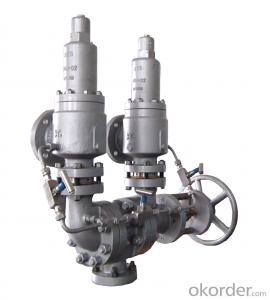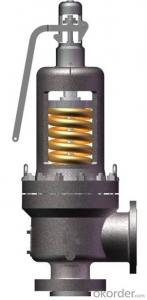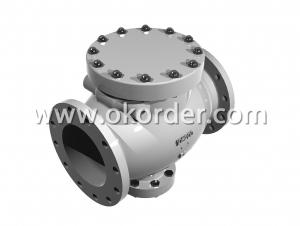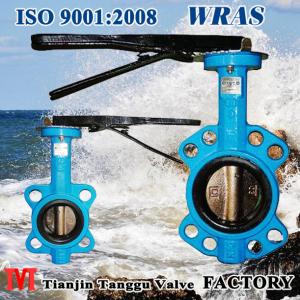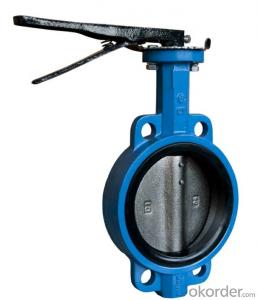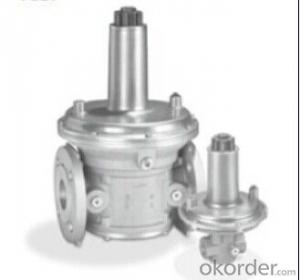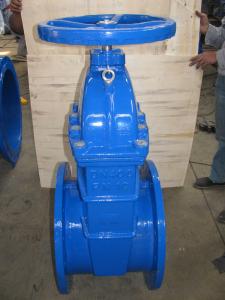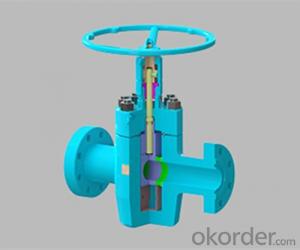High Performance High Temperature Relief Valve
- Loading Port:
- China Main Port
- Payment Terms:
- TT OR LC
- Min Order Qty:
- -
- Supply Capability:
- -
OKorder Service Pledge
OKorder Financial Service
You Might Also Like
Specifications
1. High Performance2. Competitive Price
3. Prompt Delivery
4. Perfect After-sale Service.
High Performance High Temperature Relief Valve
Product Information:
Manufactured according to ASME SECTION I
Size: 1 1/2" -- 6"
Pressure: 300LB -- 2500LB
Temperature: ±520°c
Product Feature:
The back pressure adjusting system utilizes the flowing steam to build and adjust back pressure, to ensure that lowdown is not more than 4% of set pressure.
Nozzle is welded with body, to make connection stable when it's serviced in the condition of high temperature and high pressure.
Connection of inlet and outlet is flange type, to make installation and maintenance easy.
Perfect guide design provides well alignment, to ensure that the operation of valve is agile and stable.
The selected materials are of high performance, which can be used in high temperature condition.
The nozzle and disc is faced with satellite, and lapped precisely.
Spring is produced through excellent technology, and tested under simulative service condition.
- Q: how could you make a valve or a system so that when it is pressurized, if enough pressure is reached in the system the valve will open completely and remain opened until it is close manually?I'm thinking about this in the context of an air powered dart gun, so that the firing mechanism is like a piston, and when a certain air pressure is reached, the valve that connects to the barrel will open and fire the dart
- One thing you can do is get a pressure switch and a solenoid valve so that when whatever you are pressurizing comes to a certain level the switch will close it's normally open contacts and energize the solenoid which will open the valve. However as soon as the pressure level goes below the trigger level the valve will automatically close.
- Q: 2004 R6. Runs really well... never had a problem. Has 24K miles on it. Yamaha calls for them to get readjusted at the 26,600 mile mark. So I have a few thousand more and then I'm gunna have them adjusted.I can already hear them tick especially at idle because when riding, my exhaust is so loud and all you can hear is that and the wind. Anyway, this time will come up before I know it.Just curious... what happens if the valves remain loose? Will it affect performance? How do you they become loose and is it ok to ride a bike with them like that... atleast until the specific mileage when they are supposed to be adjustd?
- Loose valves don't actually cause any major problems or damage. The only loss is power and economy. A tight valve is what you don't want. A loose valve opens later and closes earlier than it should, so less air/fuel is getting into the cylinder. A tight valve can burn up because it may never actually 'close'. You won't hurt anything by continuing to ride the bike, but there is absolutely no reason why you should continue to ride the bike without getting the valves adjusted.
- Q: I recently had an echo and they said their was a slight tricuspid valve leak but it was 19 and anything less than 20 is considered normal. I have no clue what that means. Does any one have and clue on what scale she was talking about. Also she stated that the machine are so sensitive these days that the majority of people are found to have some sort of leak. Is this the case??????
- The tricuspid valve is a valve in your heart that, like any other valve, makes the blood flow in only one direction. When your heart pumps blood into your body, this valve is normally closed so the heart only pumps it in your arteries, and not back in your veins whence it came. When this valve doesn't close shut completely, a little quantity of blood leaks through the little opening there. You can see this with an echocardiography which you said you had done. Yes, the value of 19 is really low, and the fact that the limit to normality is 20, so you're close to it, doesn't mean that you're almost sick. Keep in mind that these limits that doctors have are some guidelines, and they all have a safe zone. Plus, this is not the kind of lesion that evolves, it doesn't mean that as the years go by the little space in your valve will get bigger and bigger - nothing of that sort. It is probably a thing that you had since forever, and you will have it the same your whole life with no problems at all. In the end, let me say that if you are brave enough to go to a doctor (many people aren't, and that really sucks), you should be brave enough to ask him/her what they mean when they say certain stuff, without worrying that your question might be stupid or already answered. You didn't go to med school, and it is the doctor's duty to explain to you what is happening in your body just as it is to diagnose and treat you. Best of luck!
- Q: After shutting off the hot and cold water lines to my washer to remove the unit from my laundry room i noticed a small leak coming from the hot water valve as if the valve is not completely closing. The valves themselves should be roughly 10 years old and were extremely tight when attempting to close them, my question is how big of a job is this to replace the water valve? Is it as simple as turning off the main water to the house and replacing the valve or are these typically soldered on? Currently i just ran the hose for the hot water to the drain line to prevent water from leaking onto the floor so is this something that is a fairly non issue once i hook the lines back up to the washer and turn them back on? Or is this something i should get addressed asap?
- Laundry Water Valve
- Q: It's just a small 1 cylinder 1000 watt generator but thanks to contributors here, I verified the exhaust valve is pitted after I cleaned it all up with oven cleaner a toothbrush. My question is can I just replace the valve itself or do I need an entire new head? The seats still feel smooth.
- There is no need to replace head if the seat is good. Blue smoke indicates to rich a fuel mixture,white indicates oil consumption.
- Q: Hi, i bought an xr250r 2002 model. I rebuilt the engine and put in new exhaust valves. After i did this proper compression in the motor came back and it wasnt blowing smoke anymore. I took it for a 'run-in' ride, and noticed that the engine was quite noisy. I guessed it was the valves needing adjusting. I got numbers for the valve clearences which were: .004 of in inch for the exhaust valves and .005 of an inch for the air intake. Now i have done this the compression in the bike is enormous, it is barely possible to kick over, and the motor is very noisy, there is a loud ticking noise which im guessing is still the valves. Is all this normal considering i have just rebuilt the engine, put in new valves and hardly ridden (one 50km ride)? I would like to keep riding it to run it better to see if the motor loosens up, but im scared to ride it as it is. Any advice would be greatly appreciated.
- Did you adjust your cam chain?
- Q: Also what prevents this from occuring? I have a lab due tomorrow for my biology class this is one of the questions. the answer is no where in my book, and we haven't discussed this in class. im also having a hard time finding the answer online. i would assume it would have something to do with the elasticity of the valves, and i know that when valves are weak sometimes blood can flow back into the artium when the ventricle contracts causing a heart murmur and other problems, but i haven't came across any information that talks about the valve being pushed backwards. if you can help me out that would be awesome! thanks =]
- the heart valves maintain the unidirectional flow of blood in the heart by opening and closing depending on the difference in pressure on each side. (wiki) So I would assume that the pressure of blood flow is what prevents the valve from pushing backwards. ALSO Atrioventricular valves These are small valves that prevent backflow from the ventricles into the atrium during systole. They are anchored to the wall of the ventricle by chordae tendineae, which prevent the valve from inverting. The chordae tendineae are attached to papillary muscles that cause tension to better hold the valve. Together, the papillary muscles and the chordae tendineae are known as the subvalvular apparatus. The function of the subvalvular apparatus is to keep the valves from prolapsing into the atria when they close. The subvalvular apparatus have no effect on the opening and closure of the valves, however. This is caused entirely by the pressure gradient across the valve.
- Q: 1994 Chevy K1500 P/U 5.7 liter 350 4X4 5 speed. When the truck is under a hard pull the valves start knocking, the knock sensor adjust the timing and the check engine light comes on. The code for the light is not detecting knock sensor. I have changed the pcv valve (which was suggested) and no change. This has went on for about 5 years. Doesn't matter the grade of fuel I use. Routine maintance and tune ups have been done to this truck. The converter was taken off 7 years ago because it was clogged. The truck runs rich after the timing adjust. The light resets itself when it is turned off. ( the code is saved)
- Excessive carbon build up on the valves may also be causing pre-detonation which the knock sensor will not be able to correct. If it is a high mileage or a rough service motor it may be time to open it up and see if it's time for a valve job, or possibly a rebuild.
- Q: I'm picking up euphonium (brass instrument) after a 5 year hiatus. Can I still use my old valve oil and slide grease (Trombotine)?
- As the others have pointed out, no, it doesn't expire, but I never use old grease myself. You get lots of spit transfer from whatever you're lubing up to the grease/oil and the bacteria from said spit has just been.. sitting there. Growing. And possibly multiplying. Sorry. I'm a germaphobe. That's just yucky to me.
- Q: My valve covers are leaking how do I take the intake off my v6 firebird?
- You probably don't need to. Just tighten the screws up a little bit. several years, GM decided to use gorilla snot (silicone) instead of real gasket material. THis was a BIG mistake. I don't know if this is what you have. If this is so, Fel-Pro makes wonderful REAL gaskets. IF you need more info, check with local libraries for the ALLDATA data base. It shows you everything in great detail. Sometimes, oil gets forced through covers due to a clog in the oil pressure relief valve, which is part of your oil pump. You should do a chemicla engine de-sludge to clean this thing out as a preventative to futire woes. THen switch to a good synthetic oil, like Mobil One or Pennzoil Platinum. Your engine will just LOVE you for it!!!
Send your message to us
High Performance High Temperature Relief Valve
- Loading Port:
- China Main Port
- Payment Terms:
- TT OR LC
- Min Order Qty:
- -
- Supply Capability:
- -
OKorder Service Pledge
OKorder Financial Service
Similar products
Hot products
Hot Searches
Related keywords
